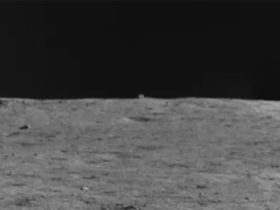NASA’s Mars rover Curiosity has rolled into a patch of ground that could shed considerable light on the Red Planet’s history.
Curiosity landed inside the Gale Crater in August 2012, on a mission to assess the region’s past potential to host Earth-like life. Curiosity found evidence that Gale hosted a habitable lake-and-stream system billions of years ago, and that this environment likely persisted for long stretches.
In September 2014, Curiosity reached the base of Mount Sharp, the 5-mile-high massif that rises into the Martian sky from Gale’s center. Ever since, the rover has been climbing Mount Sharp’s foothills, reading the many rock layers for clues about how and when Gale’s lake — and the rest of the Martian surface — dried out.
What has Curiosity found after all these years searching the dust?
More Science Headlines
This exotic particle had an out-of-body experience; scientists took a picture of it
Humans apparently have more in common with flies than we thought
A Chinese satellite and a Russian rocket may have collided in space
How and why did scientists create a “daddy shortlegs” arachnid?











Leave a Reply